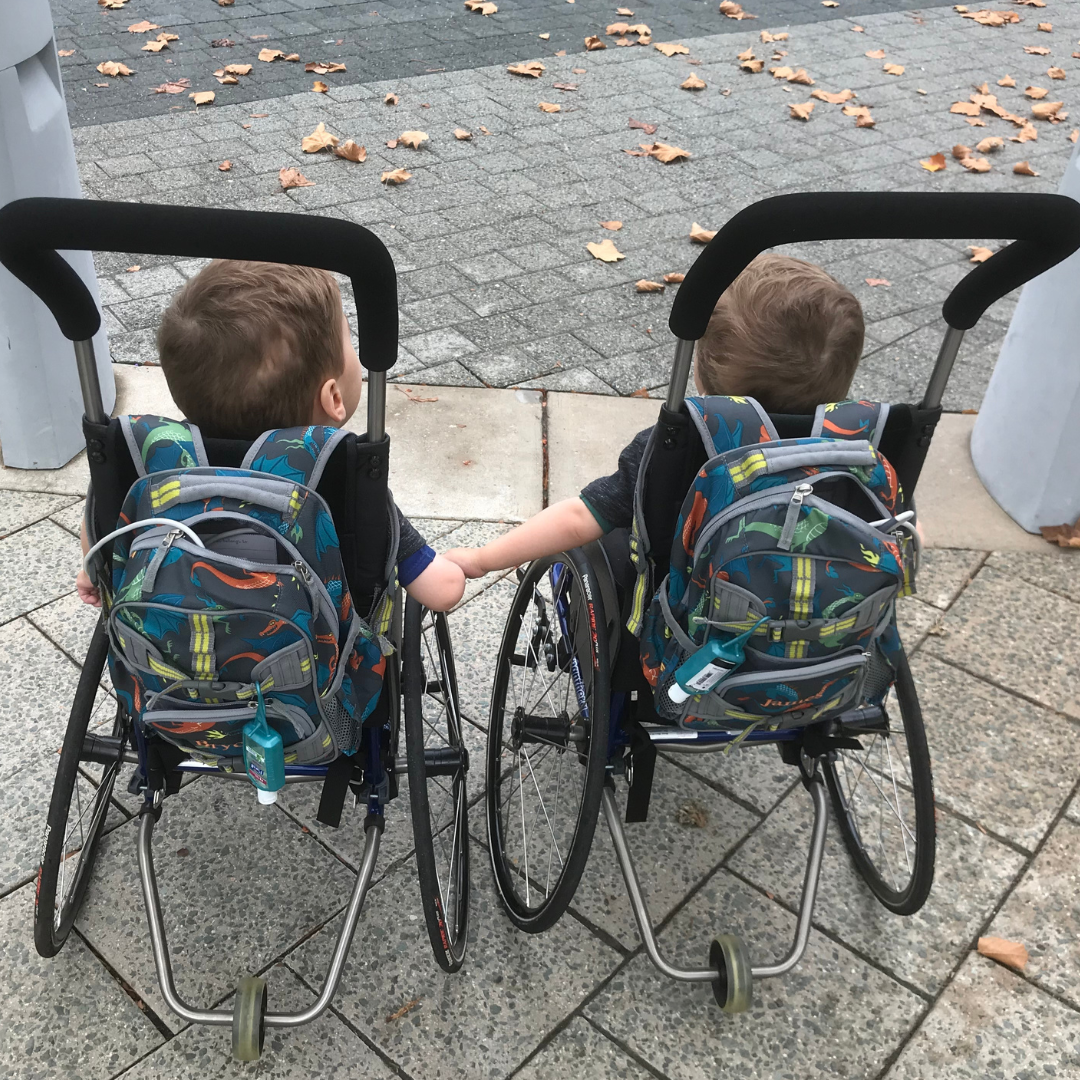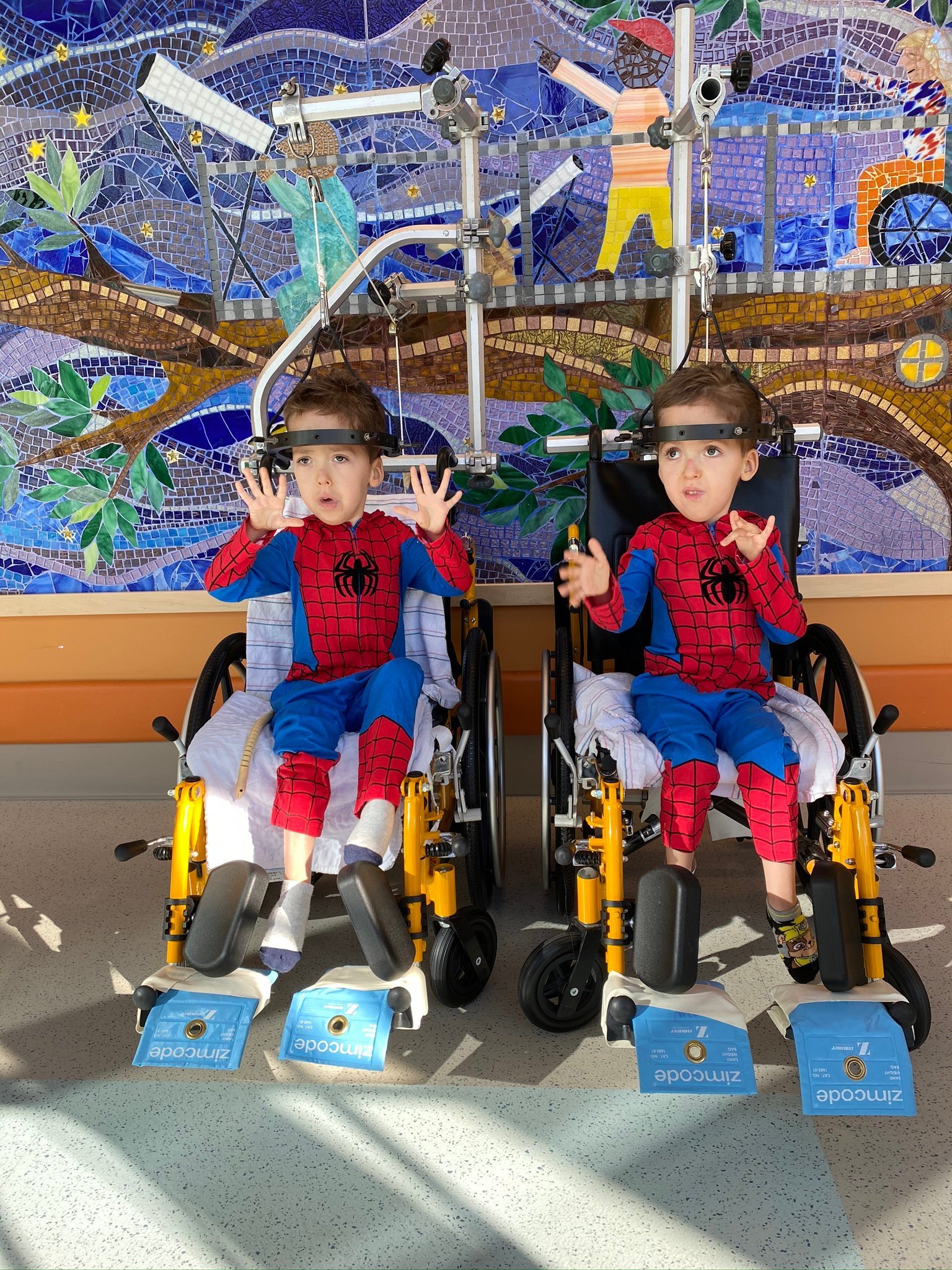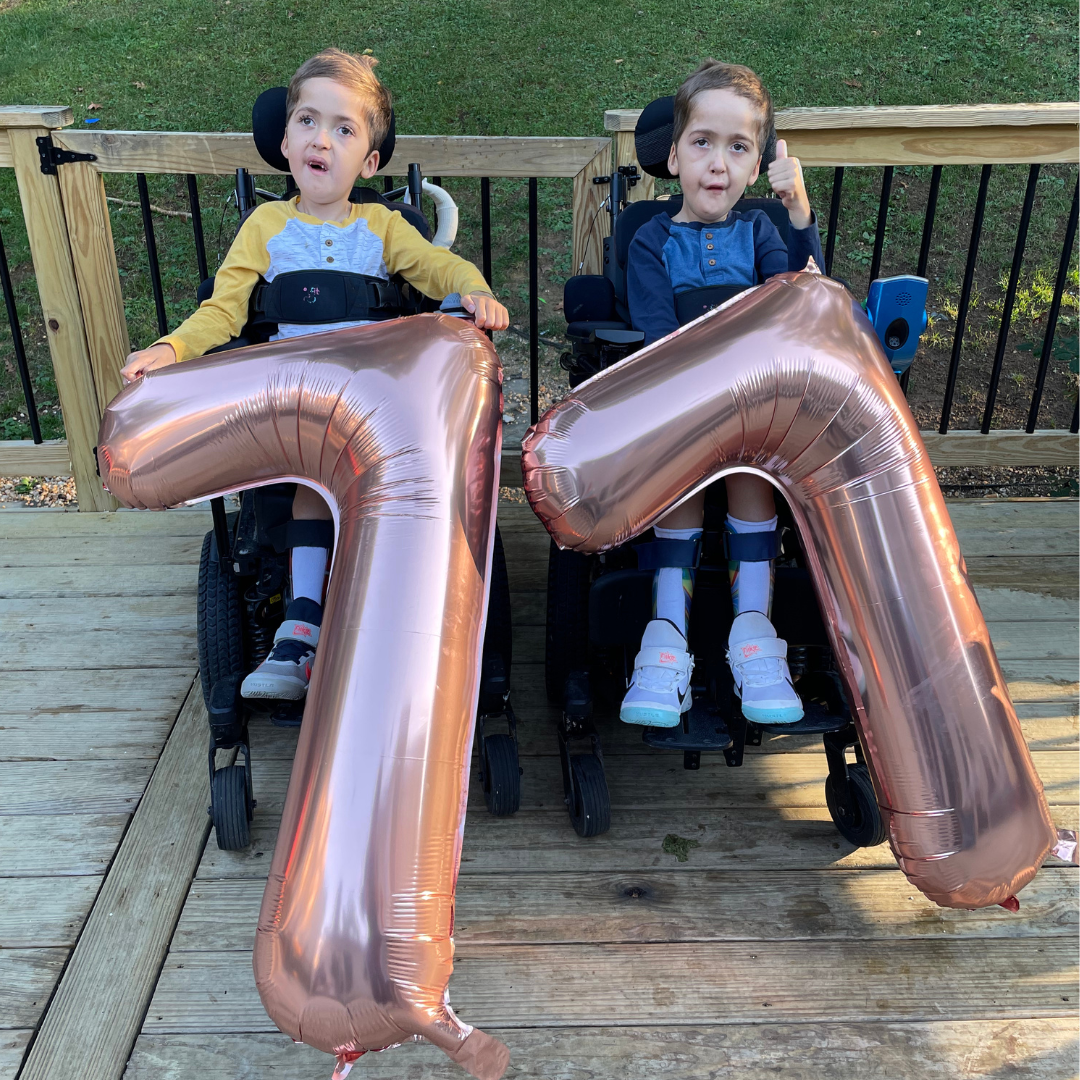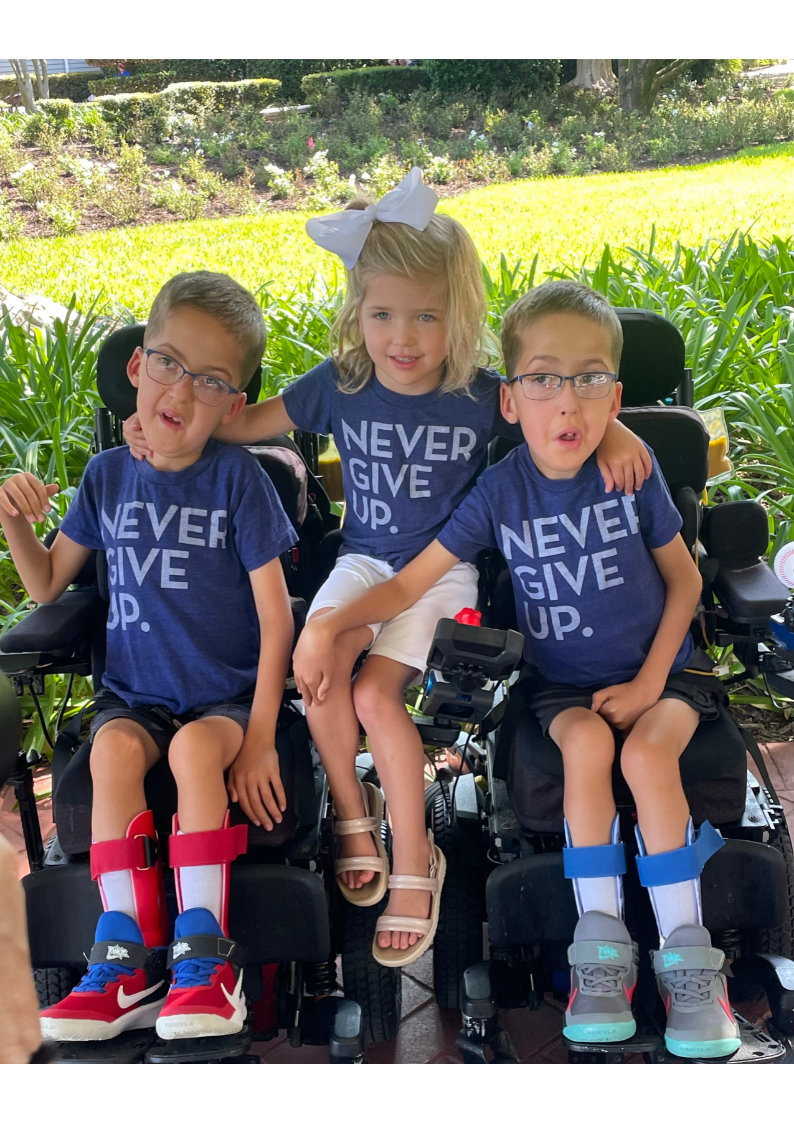I heard the acronym SMA for the first time seven and a half years ago. Those three letters changed my family forever.
If you’re anything like I was, you probably have no idea what SMA is. It stands for Spinal Muscular Atrophy, a progressive neurodegenerative disease that affects the motor nerve cells in the spinal cord and impacts the muscles used for activities such as breathing, eating, crawling, and walking.
I first heard about SMA from a neurologist.
She explained to me, with a fair amount of confidence, that she believed my 6-month-old twins, Bryce and James, were missing developmental milestones because they had SMA.
Then she crushed my soul.
Because of SMA, there was a high likelihood my boys wouldn't survive until the age of two.
 |
I had searched for answers after noticing my boys struggled with tummy time, never picked their heads up, and never tried to come up on their elbows — all things they should have been doing by six months.
I spent many sleepless nights Googling and researching to try to find an answer.
When I brought up my concerns and observations to a pediatrician, I was told not to worry. They were twins, boys, and a few weeks early, I was told. They would catch up.
But I knew it was something more.
A devastating disease
SMA affects approximately one in 11,000 births in the U.S., and about one in every 50 Americans is a genetic carrier. SMA can affect any race or gender. SMA is often compared to ALS in infants. Much like ALS, the body will have severe disabilities while the mind remains unaffected. Cognitively, those with SMA usually have normal to high intelligence.
SMA, caused by a gene mutation that results in low levels of a protein needed by nerve cells, did not have any treatment options when my boys were first diagnosed, which is why they weren’t expected to live past age 2. Without this needed protein, nerve cells cannot properly function and eventually die.
If our boys did survive, we were told they would likely have a trach, be dependent on a ventilator to breathe for them, and likely would only have movement in their fingers left.
Finding hope and joy
But through the SMA community, we found hope for Bryce and James: A clinical trial. The boys joined the trial right away and began to make progress instead of losing more of their abilities.
 |
Now, seven years later, I am overjoyed to report we have gone from zero to three FDA-approved treatments for SMA in the United States. It brings me so much happiness to know parents of children newly diagnosed with SMA are no longer handed a death sentence, and instead handed a future filled with hope.
 |
Even though our boys received treatment at a young age, SMA had already started its attack on their young bodies.
The boys lost their ability to swallow just before their first birthday and require a suction machine, a cough assist, and bipap at night to help their breathing.
They also use power and manual wheelchairs and require full assistance with transfers everywhere they go.
Their days are filled with appointments, therapy, breathing treatments, and stretching on top of typically developing 7-year-old stuff like school, playtime with their little sister, video games, and friends.
 |
Every day is hard and exhausting, but balanced with so much joy! No one is promised tomorrow, but seven and a half years ago I was barely promised another year and a half. Instead, I’ve had the gift of almost eight years with two of the greatest kids.
August is SMA Month. To learn more about SMA or get involved, check out curesma.org and fightingforkaiden.org.
Kelly Eakin is the publisher of Macaroni KID Mt Airy-Damascus-Urbana, Md.


